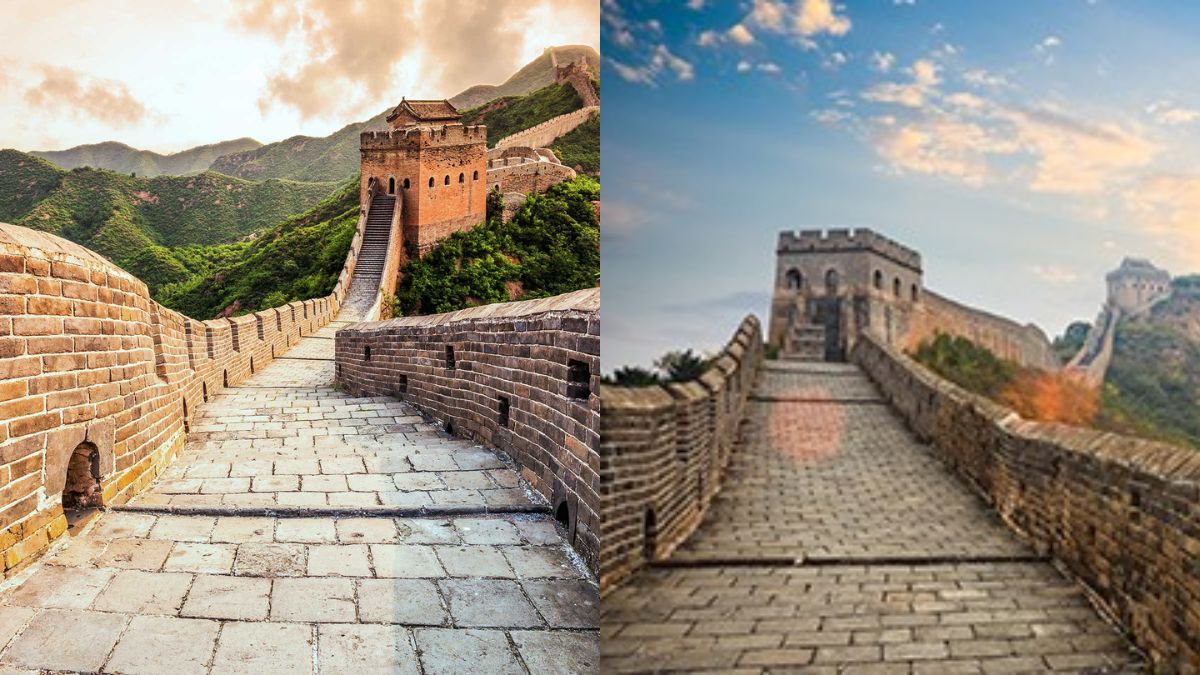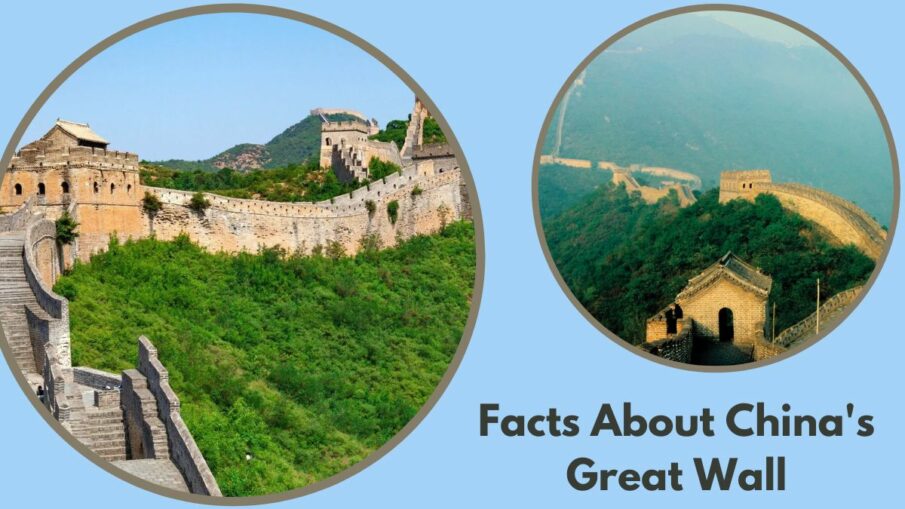The Great Wall of China is still a visible reminder of the Chinese people’s resourcefulness and tenacity. It is still among the most well-liked travel spots worldwide. The Great Wall, one of the Seven Wonders of the World, is a remarkable feat of engineering.
Let’s examine the top ten fascinating facts regarding China’s Great Wall. With a length of 21,196 kilometres, or 13,171 miles, the Great Wall is the longest in the world by official measurements. It would take you at least a year and a half to try to walk the entire distance. It’s also remarkably tall, standing between 15 and 30 feet (4.5 and 9.1 meters) in the air.
1. The Great Wall Did Not Bury Workers
A widely held belief is that labourers who perished while building China’s Great Wall were interred inside the wall. It is usually believed to be a myth, and there isn’t much evidence to back up this assertion. Popular culture, including motion pictures and television series, has continued the legend.
The Great Wall’s building was a vast project that took a significant amount of manpower and materials, according to historians. However, there is no proof that labourers were purposefully buried alive to “entomb” them inside the wall.
2. The Great Wall Is Not a Continuous Wall
The Great Wall of China is not a continuous wall, unlike what the public believes. The Great Wall is a collection of walls separated by natural barriers like mountains and fortifications. The length of the wall pieces varies, but the longest one is more than 5,000 miles (8,046 kilometres).

Throughout history, several kingdoms and periods have constructed various portions. The Warring States period, in the 7th century BC, saw the construction of the oldest sections of the Great Wall. The construction of more walls and fortifications over time led to the creation of a more cohesive defensive system.
3. The Great Wall Is Visible from Space
Though a little debatable, this is the case! It is possible to see the wall from space, although most likely not with the unaided eye—and most definitely not from the moon. If the weather is suitable, radar imaging from space should be able to see the structure, according to NASA.
However, how is it possible to see this enormous structure from space? The Great Wall of China is located on high terrain and spans a vast expanse of northern China; this is why it is the answer. The wall stands out from space because of the contrast between its pale tint and the surrounding black environment, especially on clear days and from specific angles.
4. The Great Wall Was Built by Soldiers, Farmers, and Convicts
The construction of the Great Wall, under the direction of General Meng Tian, involved a massive quantity of human labour. To complete its construction, Tian effectively raised his army from local farmers, prisoners, and real troops.
Due to their combined expertise in engineering and warfare, they were able to construct the enormous defences that comprised the wall. Clearing the soil, excavating trenches, and constructing the wall’s foundation were frequently the responsibilities of farmers.
Criminals received harsh punishments such as working on the wall, where they frequently had to put in long hours in difficult conditions.
Click on the following article links to read more such facts:
5. The Great Wall Is Made of Rice
Brick, tamped soil, and stone were among the materials used to build the Great Wall. What brought it all together, though, is the most intriguing component. In addition to the usual mixture of limestone and water, they added something unusual to the mortar they used to place the bricks and stone: sticky rice!
Sticky rice has been used for construction since the Ming Dynasty. To make a robust material that would stand the test of time, sticky rice was combined with water, sand, and slaked lime. But first, why even use rice? Rice’s amylopectin, when combined with other ingredients, makes a sticky, flexible mortar that is more resilient to earthquakes and other natural calamities.
6. The Great Wall Is a UNESCO World Heritage Site
A UNESCO World Heritage Site, the Great Wall is known for its cultural value all over the world. The construction of the Great Wall took place over thousands of years, starting in the 7th century BC and lasting until the Ming Dynasty (1368-1644).
Constructed to defend the Chinese empire from northern invasion armies, the wall stretches over 13,000 kilometres across northern China. However, the Great Wall represents Chinese culture and identity and is more than just a defensive structure.
The wall is a reflection of the “feng shui” school of ancient Chinese philosophy, which placed a strong emphasis on the harmony of natural and artificial elements in the surrounding space.
7. The Great Wall Has Strict Preservation Rules
With an estimated 10 million tourists annually, it is still a well-liked destination. Is there a greater damage than benefit from this? There are some quite stringent rules in place to aid in halting the Great Wall’s gradual degradation.
It’s against the law to remove stones, bricks, or any other materials from the Great Wall. You heard correctly—no mementoes for you! The Chinese government forbids any changes or adjustments to the wall itself because it wishes to keep the wall in its original form. That means, try as you might, you cannot chip off bricks or carve your initials into the wall.
8. The Great Wall Is Very Important Culturally
Because it represents China’s rich history and cultural identity, the Great Wall of China has enormous cultural significance. The wall represents China’s tenacity, power, and unity in addition to being a physical edifice.
For decades, it has been a symbol of Chinese culture and politics, encouraging successive generations of Chinese citizens to resist and protect their country. For more than two millennia, the Great Wall has been an integral element of Chinese culture and has significantly influenced the nation’s history.
The wall has seen many conflicts, victories, and cross-cultural interactions, and people from all over the world are still in awe of it and full of admiration for it.
9. The Great Wall Is Home to Rare Plants and Animals
Many threatened plant and animal species can be found living along the Great Wall of China. Considered a biodiversity hotspot, the wall and its environs are home to more than 300 different types of animals and almost 1,000 different plant species, many of which are uncommon or endangered.
A few of the threatened species in the region are the snow leopard, Chinese goral, golden takin, and black-necked crane.
10. The Great Wall Repurposes Caves
There are a lot of naturally occurring caves and artificial tunnels around the Great Wall of China that were useful for military operations. For men and weapons, the caves and tunnels offered cover and a place to store them.
They also served as covert routes for communication and ambush attacks. Transporting reinforcements and supplies also took place through several of the tunnels. However, the caves served more than simply a utilitarian purpose; they also had some really interesting cultural importance.
The people who constructed the wall revered some of the caverns, which they utilized as shrines or temples. They held that the ancestors’ spirits resided in the caverns, which served as a spiritual portal between the world below and the heavens above.
Hope you like it. Stay tuned with us on Thegeofacts.com for more amazing updates.


Leave a Reply